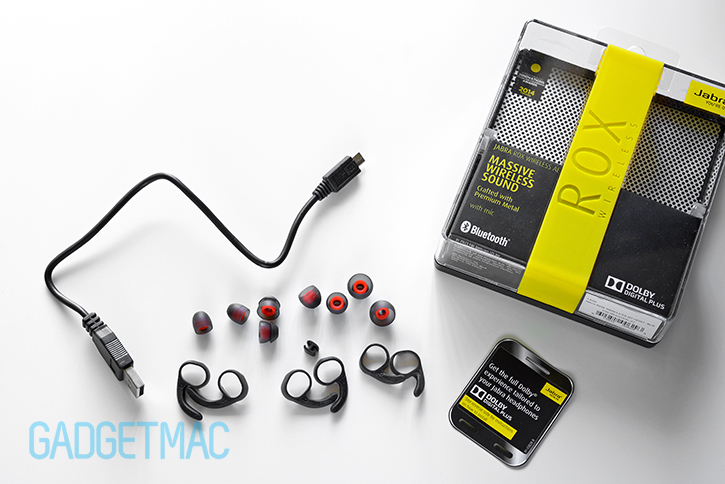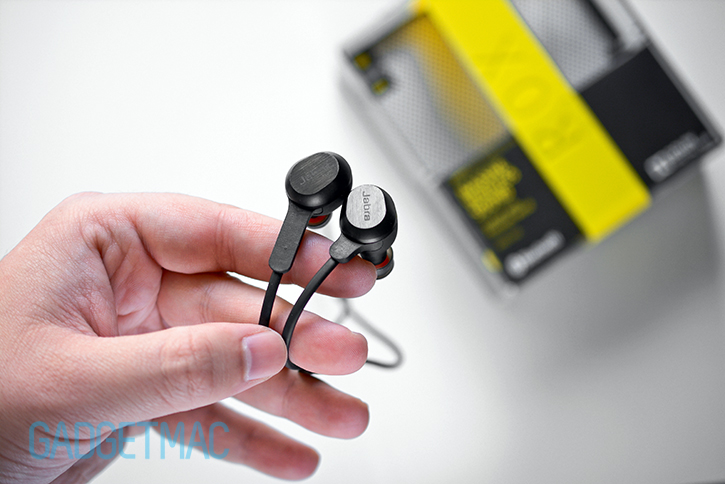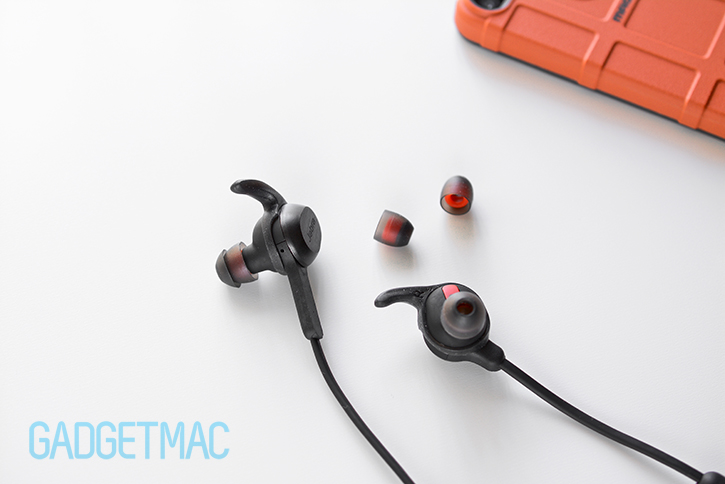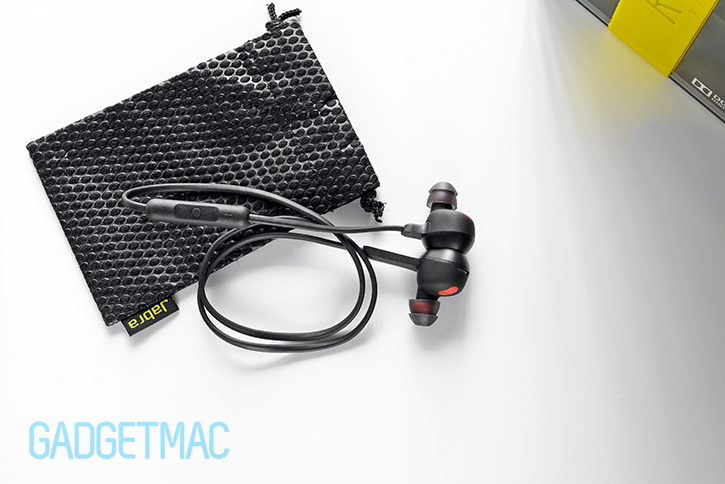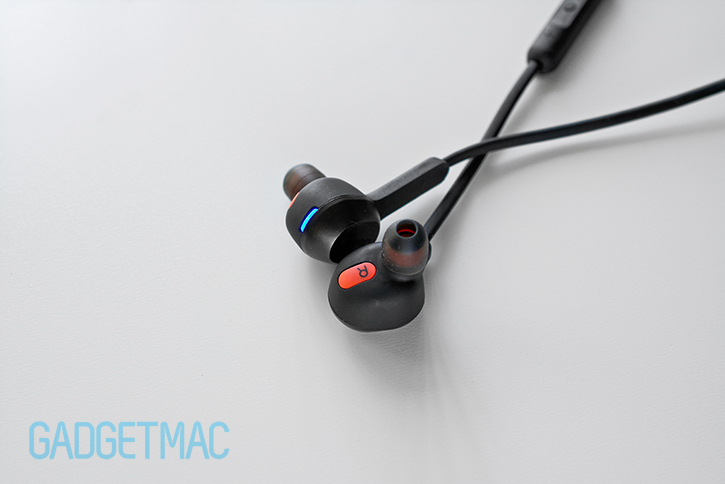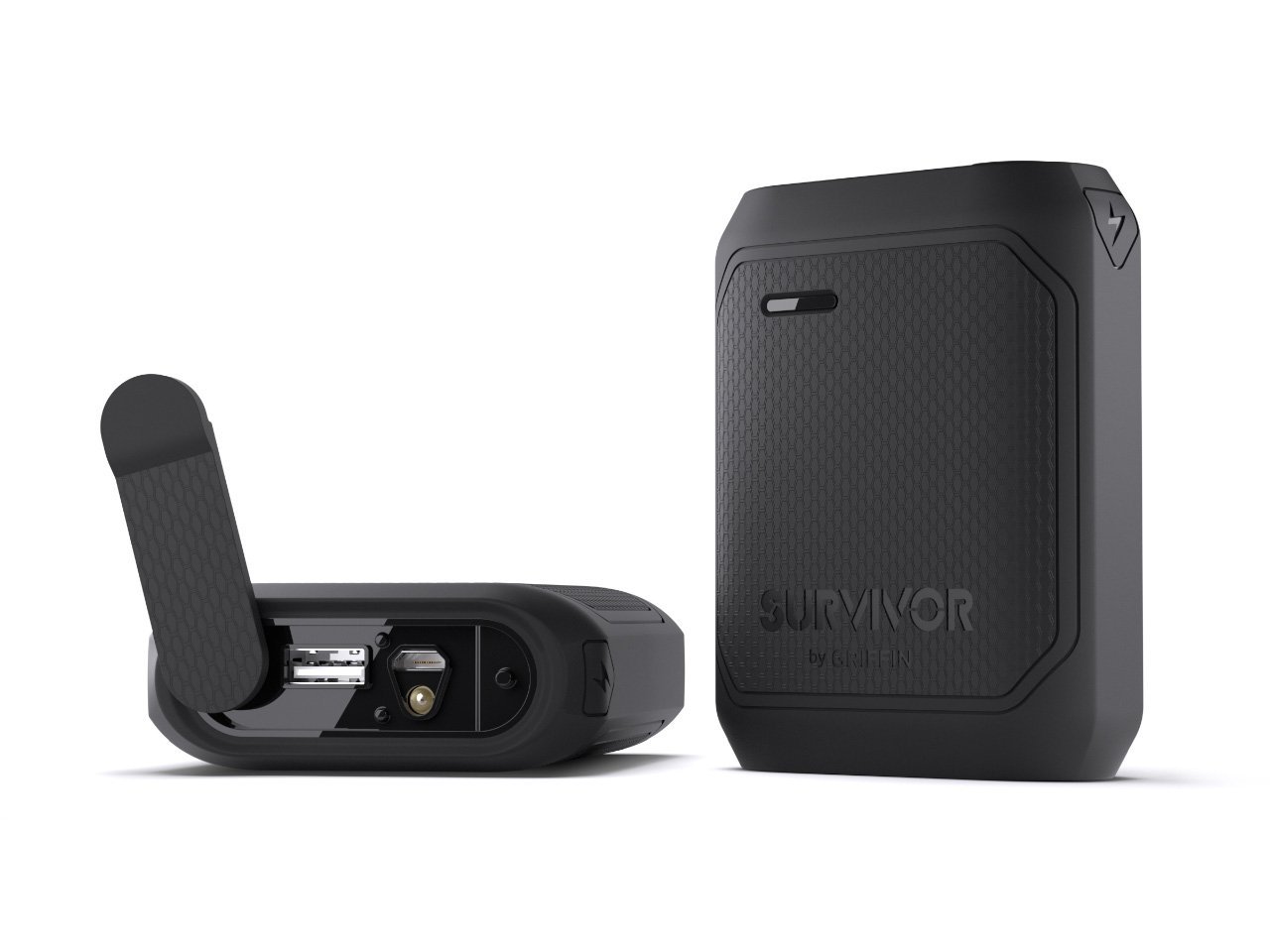Jabra Rox Wireless In-Ear Headphones Review
/Jabra. Hearing the name will make any tech-savvy person think of a Bluetooth headset. Jabra is famous for its headsets for one reason, they're one of the best on the market. And like Jawbone, Jabra has recently made a push towards portable wireless speakers and even headphones with its Solemate and Revo series, which combine decades of experience in voice communication technologies. Jabra's new Rox Wireless are the company's first wireless stereo Bluetooth 4.0 in-ear headphones to offer users a more discrete and familiar way of listening to music compared to the behind-the-ear design of the Jabra Sport Wireless+, along with more advanced features and improved battery life. The Rox Wireless pack impressive wireless headset pedigree and high-definition Dolby-enhanced audio capability into a relaively small impervious form factor. But will it be enough to face steep competition from notable rivals such as JayBird's BlueBuds X and Plantronic's affordably priced BackBeat Go 2? If you're looking to stream your music wirelessly with the added benefit of ultra-portability, you should definitely tune into our in-depth Rox Wireless review after the jump!
As expected, the Rox Wireless arrive distinctively presented in mid-air inside see-through packaging that's very reminiscent of Jawbone's iconic headset packing which is designed to highlight the product as it is suspended behind a museum-like casing. Jabra's Rox Wireless packaging also shares a similar look with the company's Revo and Vox headphones. The packaging is well made with a yellow rubber stripe across the middle to evoke a sense of sportiness, and overall adds value to the unboxing experience which we think is as important as the product itself.
But enough talking about the exterior casing. Inside you'll find an accessory box filled with an assortment of ColorCore EarGel silicone tips, four sets to be specific – as well as three sets of EarWings ear stabilizers to help you find the perfect and most secure fit that best suits your preference and active lifestyle. In addition, you'll also get a very short micro-USB to USB charging cable, a tiny FitClip cable tidy as well as a unique code to download Jabra's Sound app for free on iOS devices which will let you unlock the Rox Wireless' Dolby-enhanced audio feature. We will talk about these features in more detail further into the review.
Last but not least, also included in the box is this cool looking fabric pouch which you can use to store your tips and EarWings along with the Rox Wireless. The quality isn't the best we've seen, and securing the contents is using the drawstring has proven to be more difficult then it should be. So while we don't think you'll like using it to protect and store your Rox Wireless during a commute or just in general, it's better than nothing at all.
Priced fairly reasonably at $130, Jabra's Rox Wireless are available in white and in the black color you see before you. Together with other notable offerings like the BlueBuds X and the BackBeat Go 2, the Rox Wireless are one of the first wireless headphones with a true in-ear headphone style that leaves behind that predominant Bluetooth headset shape that had you looking like you were wearing a bulky Bluetooth headset in each ear. We're looking at you, JayBird Freedom. Fortunately for everyone, the technology and design have both advanced since, and now users can enjoy wearing wireless in-ear headphones that are nearly as small and compact as ordinary wired variants. And unlike the many clone-like wireless in-ear headphones out there, Jarba's Rox Wireless offer a refreshing and unique new design that is built by Jabra from the ground up rather than a rebadged OEM product like the JayBird BlueBuds X - JBL J46BT - MuseMini UberBuds. And obviously, we respect originality.
Are the Rox Wireless one of the best looking in-ears we've reviewed? We think not. But they're certainly not the worst looking pair we've tested, and those brushed stainless steel caps help make them look more convincing. And although the Jabra Rox are bulkier than a typical pair of in-ear headphones, they do a superb job at looking great when you wear them. Surprisingly enough, they don't stick out as much and they definitely don't look ridiculous fitted inside your ears. I'm hugely impressed by how comfortable they are to wear even though it did take me a while to adjust and find the right combination of tips to get the right fit, tight isolation and security; considering the oversized form factor in relation to normal wired in-ear headphones that is. Then again they’re not much bigger than the wired AKG K391 NC we reviewed.
What is better than plain in-ear headphones? The answer is right in front of you. Wireless in-ear headphones are as convenient to use as wireless speakers. And the Rox Wireless are a perfect example. But wireless freedom comes at a cost, and in the Rox Wireless' case it's that they lack stellar battery life. 6 hours is not plenty, though it isn't bad either. Expect to have to recharge your wireless in-ears frequently, or else be left with non-functioning duds and no music intimacy on demand. But think about your wireless freedom, the convenience of two independent devices connected wirelessly. You won't need to pull your smartphone out of your pocket of bag just to answer a call, switch a music track or adjust the volume whilst a cable tugs and flaps around when you walk or run.
The Rox Wireless are the best built wireless in-ear headphones you'll find.
Jabra has done a remarkable job putting together something that not only will look good, but will also endure heavy usage at virtually any weather condition. The Rox Wireless are designed to be extremely durable and are shock, water and dust resistant, and feature a kevlar-reinforced tangle-free cable. You can wear them out in the rain and sweat your ass off at the gym without needing to worry about ruining your investment. And although they are primarily built with a soft-touch rubberized plastic construction - an albeit rigid plastic construction, the Rox Wireless are fantastically put together and certainly convey that quality to price ration quite well. As soon as you pick them up you can feel that 19 grams of hefty build quality shine through. They're also the only wireless in-ear headphones we know of that have brushed stainless steel accents, which add a touch of premium quality to the overall build quality as well as a bit of svelte aesthetic detailing. The Rox Wireless make both of the BlueBuds X and BackBeat Go 2 seem so plasticky by comparison.
Comfort is where we think many people will run into trouble. It's crucial that you try out different sizes and combinations to find out what works best for you using the Rox Wireless' ColorCore EarGel tips and EarWings. At first I tried using the Rox Wireless without attaching on the EarWing silicone stabilizers which are the pointy rings that can optionally be slipped onto the Rox Wireless and are designed to lock them into your ear during intensive activities. I quickly found out that I wasn't able to achieve a very good fit that would stay inside my ears for more than a minute. I've tried all four silicone tips, and while I found the double flanged tips to provide the best fit, I wasn't happy with the fact that the sheer bulky of the Rox Wireless buds would simply fall out after a short period. It's extremely rare for me not to find the perfect fit using stock silicon tips included with in-ear headphones, but because the Rox Wireless aren't your typical wired in-ears, they require more support in order for them to stay secured inside your ear canals.
As soon as I used the included EarWings stabilizers merged with the double flanged EarGel tips these make a huge difference in the way that the Rox Wireless are kept inside your ears even when performing physical activities. But there's one drawback in that not everyone will find them to be as comfortable to wear compared to using the Rox Wireless straight up with just the EarGel ear tips.
Like JayBird's BlueBuds X Secure Fit cushions, Jabra's EarWings work by creating more friction as they fit under your ear ridge where they end up applying pressure up against the inner part of your ear ridge. Because of this, the fit becomes tighter, more secure and will enable you to wear the Rox Wireless for a prolong period of time. I found that I would have to adjust the position of these EarWing stabilizers to relieve discomfort until I got used to where things need to fall into place. After a few days, the Rox Wireless have become a lot more comfortable to wear, felt very secure thanks to these EarWings, and wouldn't fall out of my ears. Once these are attached around the Rox Wireless, they're held on tightly and won't be easy to lose in-between uses.
If you end up frustrated because neither of these work for you and may very have a bit of an ear fatigue as a result, there's always a third option that will probably be the most comfortable solution for everyone who has ever had a problem with the fit and comfort of in-ear headphones - especially the ones like the Rox Wireless which were also designed for sport. And that is foam tips. Sadly Jabra doesn't include them, but you can easily find these online and in some retail stores. They're called Comply foam tips and we've been recommending them for years. They're absolutely the best last resort if all else fails.
In fact, if you don't mind paying the extra $15 or so, you should use these whenever possible as they provide the best fit, sound isolation and comfort out of any silicone tip imaginable. Comply's T-200 as well as the T-400 foam tip models will work with the Rox Wireless. So if you're already using these tips with your existing in-ear headphones, you're all set. Running these foam tips on the Rox Wireless will allow you to use them more like normal in-ear headphones without requiring additional stabilization that might be uncomfortable for you.
Unlike traditional in-ear headphones which have a cable running down the sides of your face, the Rox Wireless need to be worn around the back of your ear as their short cable rests behind your neck much like Motorola's S11 Flex and every other wireless in-ear headphones. At first I was a bit worried that the rubber cable would snag on my shirt or skin when turning my head sideways, and surprisingly it hasn't been a nuisance in that regard whatsoever. That being said, you will feel it rub slightly against the back of your neck but it shouldn't impede on your movement. And if you feel like there's too much slack, you can use the included cable clip to shorten it as you see fit just like you would pick the right tip size that best fits your ear. The cable itself is light, and not completely flat or overly wide which helps it move across the back of your neck more easily which is great. If you look close, you'll notice that it is designed to be slick with a semi-flattened tapered shape that is almost like a micro aerodynamic wing.
The Rox Wireless offer up a multiple set of compelling features that you'd expect from a modern-day, state-of-the-art stereo Bluetooth headset – the highlight being a magnetic power-saving feature. Jabra's unique magnetic power saving feature is amazingly useful, clever and simply impressive. The idea is to have the Rox Wireless be out to sleep when you're done using them by magnetically attaching the two earbuds together. As soon as you allow the Rox Wireless to cling together, they will automatically power off without you ever having to press a single button. And when you feel the urge to pick them up again, they will turn on all by themselves when you pull them apart. And because they're set to automatically pair to the last device you've paired them up with, the process is so seamless it may be called magical. So yes, Jabra was inspired by Apple's iPad and how accessories can wake and put it to sleep using a magnetic connection. The Rox Wireless work in the same exact way, and they do so faultlessly.
I found this feature to be extremely pleasing and convenient to use. But there's a small problem. Because the two ends of the Rox Wireless which meet together in magnetic matrimony are both made from a painted brushed metal, the black finish will scratch from friction after a while and will not look very pretty as time goes by. You may have better luck with the white colored Rox Wireless instead due to the raw, uncolored brushed metal finish. Jabra could have avoided this cosmetic flaw by adding some rubber I between the two parts that magnetically connect to each-other, but instead it thought it would be a good idea to have to metal parts rubbing against one another.
Speaking of rubbing, when you stow away the Rox Wireless after magnetically connecting them to go to sleep, there's a small chance that they can separate and turn back on unintentionally if something were to hit them or lean against them inside your gear bag or even inside your pocket. There's one way of making sure this won't happen though and that is to turn them off using the multi-function button on the remote module without magnetically connecting them together. Magnets don't solve everything, sadly.
About two inches below the right earbud is the 3-button in-line remote module covered with a rubberized material and offers fairly good button separation. These buttons are easy enough to press, offer tactile feedback and are positioned within an easy reach right below your jaw line. And because the microphone isn't integrated into this remote module but instead is located on the left earbud itself, you don't have to worry about interfering with your conversation should you want to adjust your audio volume.
The remote features standard volume up/down adjustments, as well as a multi-function middle button which you can use to pair the Rox Wireless over Bluetooth, play/pause music, answer/end a call, reject an incoming call, redial a last used number, and even power the unit on or off using various control gestures from double-taping to long or short presses. Going back to the two volume buttons, you'll also be able to use those to perform other controls like muting the audio, skip tracks as well as to check the battery status of the Rox Wireless. But in addition to an audible battery status, you can also look at your iOS device to check the battery level which will be displayed as a Bluetooth icon with a headset battery meter beside it. The only function that can't be accessed using the Rox Wireless' multi-featured remote control is accessing voice controls like Siri, Google Now and Cortana.
Buttons are the only thing this remote encompasses however, it also features NFC. Tap on either side of the remote's surface with your NFC-enabled device – and you'll be able to painlessly pair the two devices over Bluetooth. It's worth mentioning that we made sure to test the Rox Wireless with both iOS and Android devices, and we can happily confirm that the Rox Wireless will work with both systems as far as making full use of its in-line headset functionality and music playback controls.
If we take a look behind the 3-button remote module we can see that it is partially built with the same brushed metal trim found on the Rox Wireless earbuds themselves. It was designed to give the Rox Wireless a more premium quality and aesthetic appeal, and so it has. The in-line remote module is extremely sturdy thanks to its metal hybrid build quality.
Audio during a call comes across very clearly and without distortion, while on the other end of the call, people will clearly hear your voice with a hint of echo in the treble-filled audio that is being picked up by the Rox’ built-in microphone. All in all the experience of using the Rox as a headset is quite impressive and something that you’ll find to want to be doing on a regular basis because of how useful and convenient it is. So while the microphone's audio quality isn't the cleanest we've ever experienced, it is very much acceptable.
It only takes about 2 hours to fully charge the Rox Wireless' battery using a normal USB output, and that's a fantastic figure considering the relatively and arguably short battery life. This means that you can enjoy using your wireless in-ears quicker after they've been drained from streaming your audio goodness. You'll also be able to charge them while you're on the go using a small portable backup battery charger using any micro-USB cable. To charge to the Rox Wireless you first need to flip open the magnetic brushed metal cap to reveal the hidden micro-USB charging port. This little attention to detail makes the Rox Wireless that much more sleeker. Jabra promises that you'll be able to stream music wirelessly for five and a half hours with as much as 8 days of standby time thanks in part to energy-saving Bluetooth 4.0. During our testing we were able to get five to six hours of usage at moderate volume, and we're quite pleased with the results being that they haven't fallen short of what we were lead to expect.
Now the Rox Wireless will work with virtually any audio source that supports Bluetooth. We tested a wide range of devices including Macs, iOS devices from iPhones to iPads as well as Android devices, all of which work excellently with the Rox Wireless. You can even pair two devices simultaneously if you so choose. Helpful when you switch between two different sources such as your desktop machine and your smartphone without needing to go through another pairing process. Also, it's important to note that the Rox Wireless' Bluetooth range is excellent coming in at approximately 30ft or 10m. We've got a hunch that irregular long stem underneath the left earbud is to thank for, which is where we think the Bluetooth antenna was engineered to be located. The more you know.
At the top is where a very bright multi-colored LED light alternates between blue, green and red colors to indicate charging and Bluetooth pairing mode status. The light will turn off once you've paired your device with the Rox Wireless so to not interfere.
So why would you want to purchase and use the Rox Wireless other than having a stereo Bluetooth headset functionality as well as the obvious freedom of having no cable connected to your audio source? They sound really, really good. These aren’t some Bluetooth headsets that just so happen to deliver stereo audio, but instead actual in-ear headphones that serve high quality audio. The same quality audio you’d find when using other in-ears at the $100-150 price range. Jabra may be stereotyped as a company that isn’t associated with music reproduction, but as far as we can tell Jabra shouldn't be overlooked when it comes to wireless audio gear. And to be quite honest, I was not expecting the Rox Wireless to sound as good as they do simply because Jabra isn’t the first thing I think about when I look for in-ear headphones. They are now though, especially when Bluetooth is part of the equation.
Compared to the $100 a-Jays Five by Jays we looked at recently, the Rox Wireless are on par with clear, warm dynamic sound that’s rich and full thanks to a deep low-end bass response. Speaking of bass, the Rox Wireless have plenty of it on offer. Without distorting or overpowering, the bass is thick and punchy tying together the midrange to deliver an exciting sound signature that isn’t without clarity. The highs have an above average polish where vocals come out sounding bright and confident up front. On the other hand, the a-Jays Five have more treble-backed brightness compared to the Rox Wireless, however, they’re not as motivating as the Rox Wireless in terms of a more satisfying bass performance.
The audio in general is very clean and free of static and annoying Bluetooth hissing that is sometimes found on other wireless and powered headphones. I wouldn’t say that the Rox Wireless’ midrange and highs are as defined and bright as they are when listening to the a-Jays Five perform, and nor is the bass as polished and toned. That said, the Rox Wireless perform really nicely in comparison with a warmer tonal sound signature many will find to sound great when listening to all sorts of music genres including enjoying a movie. Let's not forget Jabra's Dolby-boasting audio enhancement. We have yet to turn that promising audio flavoring on.
I hate to say it, but Jabra’s Dolby-enhancing audio processing iOS and Android app is merely a marketing ploy and arguably a gimmick in its benefit. Yes it does exactly what Jabra claims it would, in that it enriches the sound when using the Dolby audio processing feature, however, it simply and plainly introduces a different sounding EQ which introduces more warmth and richness to the audio, and not in a very complimenting way either.
The audio becomes very heavy, and loses its bright midrange and definition. We think without it turned on, the audio sounds better as it is. That worse part is that you can’t use this with any other music app such as Spotify except for the iTunes music library that you may have on your device. And that’s too restrictive if you ask me. I’ve moved on to using iTunes Radio as well as Spotify for my music needs, none of which are supported by Jabra’s Sound app with the Dolby audio processing feature.
The most ridiculous thing about Jabra's Sound app is the fact that you can use it with any headphones using its Dolby-enhanced audio feature and it'll essentially apply the same exact EQ setting to the audio signature, which again isn't even worth using. Fortunately like I’ve said before, you’re still better off without it. So at the end of the day you’re really not missing out on anything. You’ll still be able to enjoy listening to music wirelessly with any app or Bluetooth-enabled device, which of course is the best part about using the Jabra Rox.
All in all I'd have to say that I've been very pleased and genuinely impressed by the Rox Wireless. If you're an in-ears type of person and are looking to cut the cord, we think you should seriously consider Jabra's worthwhile Rox Wireless in-ear headphones. They may not have as good of a battery life as JayBird's BlueBuds X, or be as inexpensive as Plantronics' BackBeat Go 2, but what they don't lack is audio performance. The Rox Wireless are by far the most impressive wireless in-ear headphones we've tested. For the price they deliver a good balance of high quality rich sound, decent headset functionality, good battery life, great Bluetooth range, secure fit, solid durability and unique convenient features. It's only a shame that Jabra had to somewhat mislead consumers into thinking that they would be able to unlock even greater audio potential using what the company boasts as full-spectrum Dolby Digital Plus sound. Impressive, albeit when written down on paper.
Jabra has created one of the best wireless in-ear headphones on the market
Marketing gimmicks aside, there's no denying that Jabra has created one of the best wireless in-ear headphones on the market. But they're still far from being perfect when considering other wired alternates. The mic quality could be much improved to eliminate that hint of echo added to the wearer's voice during phone conversations in order for us to highly recommend the Rox Wireless as an extraordinary stereo Bluetooth headset. Fortunately, they do not disappoint when it comes to music reproduction. And if you’re more of an audiophile, chances are you’re going to like the a-Jays Five more. But if you really like the idea of using wireless in-ear headphones and you’re a casual user or someone who appreciates good quality sound tightly packed into a well designed piece of kit, you’ll be hard pressed to find better sonically performing alternatives than the Rox Wireless.







